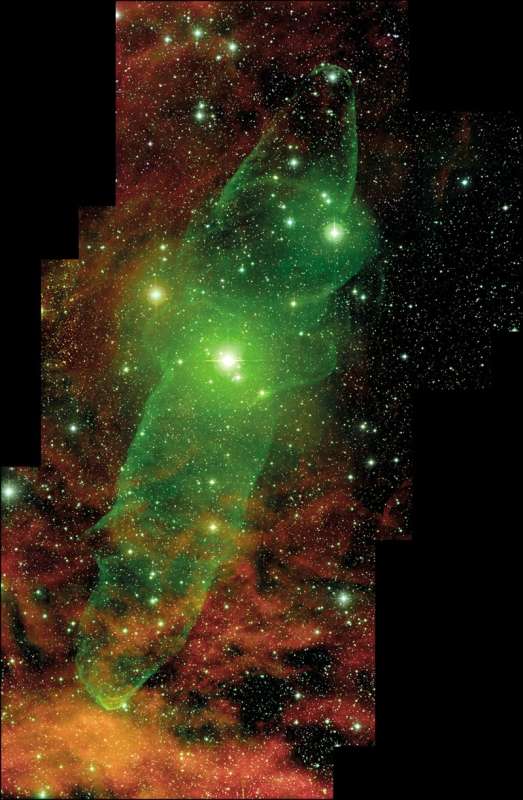Credit & Copyright: Romano Corradi
(IAC),
Nicolas Grosso, Agnès Acker, Robert Greimel, Patrick Guillout
Explanation:
A mysterious, squid-like apparition, this nebula
is very faint, but also very large in planet Earth's sky.
In the mosaic image, composed with narrowband data from
the 2.5 meter Isaac Newton Telescope, it spans
some 2.5 full moons toward the constellation Cepheus.
Recently
discovered by
French astro-imager
Nicolas Outters,
the remarkable nebula's bipolar shape and emission
are consistent with it being
a planetary nebula,
the gaseous shroud of a
dying sun-like star,
but its actual distance and origin are unknown.
A new
investigation suggests Ou4 really lies
within the emission
region SH2-129 some 2,300 light-years away.
Consistent with that scenario, the cosmic squid
would represent a spectacular outflow of material driven by a
triple system
of hot, massive stars, cataloged as HR8119,
seen near the center of the nebula.
If so, this truly giant squid nebula would physically
be nearly 50 light-years across.
Nicolas Grosso, Agnès Acker, Robert Greimel, Patrick Guillout
Authors & editors:
Robert Nemiroff
(MTU) &
Jerry Bonnell
(USRA)
NASA Web Site Statements, Warnings,
and Disclaimers
NASA Official: Jay Norris.
Specific
rights apply.
A service of:
LHEA at
NASA /
GSFC
& Michigan Tech. U.
Based on Astronomy Picture
Of the Day
